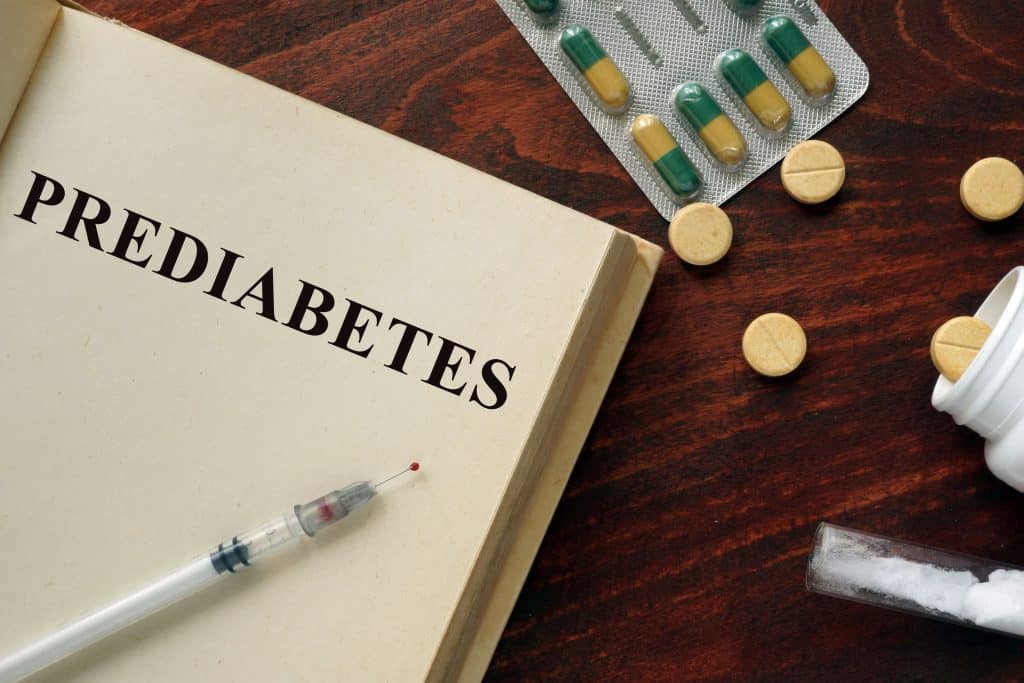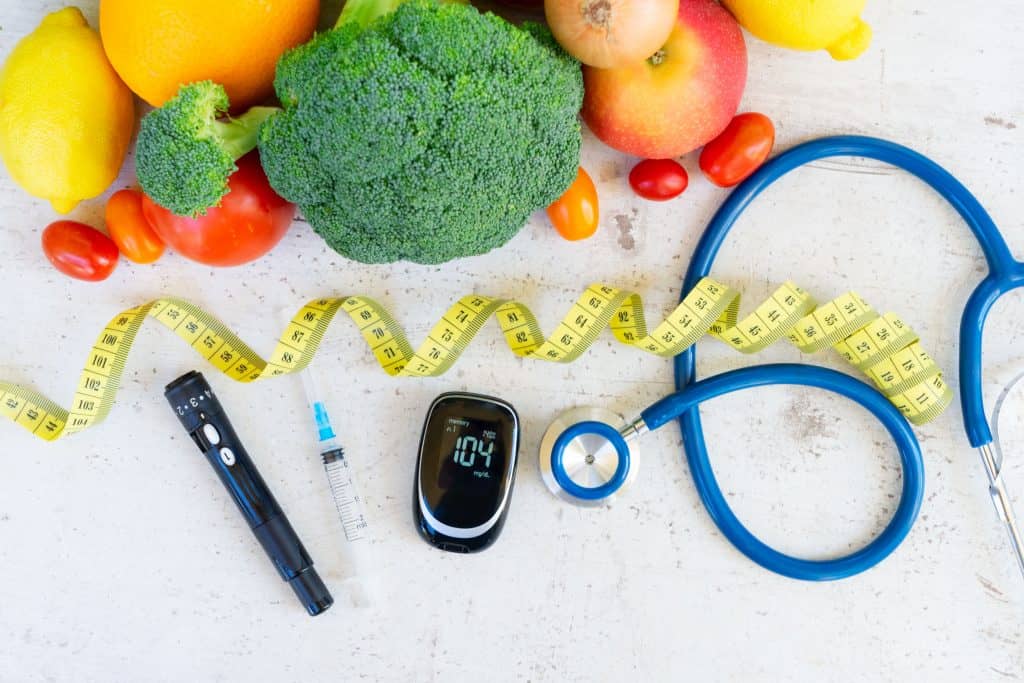Prediabetes Management – What is Prediabetes and How to Prevent it
Posted by Prescription Hope - See Editorial Guidelines (Last Updated On: Fri Jul 14 2023)
Prediabetes is defined as a health condition where blood sugar levels are higher than normal but not to the point of being diagnosed with type 2 diabetes. Diabetes can be a debilitating condition for many, so in this article, we are going to discuss prediabetes management. The CDC estimates that more than one out of every three adults in America has prediabetes. Unfortunately, most individuals that have prediabetes are unaware that they have it. Therefore, the condition is left untreated, which puts the individual at a higher risk for developing type 2 diabetes. Type 2 diabetes is very preventable with proper prediabetes management, yet nearly 28 million Americans end up with the disease. So, this article will point out the causes, risk factors, signs to look for, and treatment options for your prediabetes management.
Causes of Prediabetes
 Individuals struggling with prediabetes are not processing sugar the way their body used to. Therefore, instead of the sugar being transported correctly and being used for energy, it is building up in the blood. Hence, the rise in blood sugar.
One of two things is occurring at this stage. The first being, the pancreas may not be making enough insulin to keep up with the amount of sugar in the blood. Insulin is the hormone responsible for transporting glucose from the blood to the body’s cells.
The second being, the cells become resistant to the insulin. Essentially the body’s cells begin ignoring the signals of insulin, resulting in increased blood sugar.
Individuals struggling with prediabetes are not processing sugar the way their body used to. Therefore, instead of the sugar being transported correctly and being used for energy, it is building up in the blood. Hence, the rise in blood sugar.
One of two things is occurring at this stage. The first being, the pancreas may not be making enough insulin to keep up with the amount of sugar in the blood. Insulin is the hormone responsible for transporting glucose from the blood to the body’s cells.
The second being, the cells become resistant to the insulin. Essentially the body’s cells begin ignoring the signals of insulin, resulting in increased blood sugar.
Risk Factors
There are a variety of risk factors involved that may put someone at risk for developing prediabetes and type 2 diabetes. Being overweight and having a larger waist size is one of the most common risk factors. The more fatty tissue a person carries around, especially around the abdominal area, the more likely they are to have insulin resistance. As mentioned above, insulin resistance will, over time, result in increased blood sugar. A poor diet is another common risk factor. Part of prediabetes management is sticking to a strict diet that won’t spike blood sugars. A person that consumes foods and beverages with high contents of added sugars is at a higher risk for prediabetes. A lack of physical activity is another factor that may put you at a higher risk for prediabetes or diabetes. Exercise and being physically active not only helps you maintain weight but also helps increase insulin sensitivity. Those over the age of 45 are more likely to develop diabetes. However, it can happen at any age. Your risk remains lower after the age of 45 if you have proper prediabetes management, though. Family history plays a role in determining risk factors as well. If you have a parent or sibling that has type 2 diabetes, then you may be at a higher risk for diabetes also. It is not clear why, but race seems to affect the risk in those that develop diabetes. Individuals that are African American or Hispanic are more likely to develop prediabetes. Researchers have questioned if it has to do with the genes of a specific race, or if it has to do with environmental factors. Being born into a community that doesn’t have access to proper healthcare or healthy food options could be the main contributing factor, rather than genes. Sleeping problems and lack of sleep can also affect someone’s risk of developing diabetes. A person with a condition, such as sleep apnea, is more likely to develop insulin resistance. Other risk factors may include the use of tobacco, high cholesterol levels, or high triglyceride levels. If your life is consistent with any of these risk factors, then you may want to look into effective prediabetes management options.Signs and Symptoms
The signs and symptoms of prediabetes are not as noticeable as symptoms of type 2 diabetes. If you are having very noticeable symptoms, then you may have moved from prediabetes to diabetes. Some signs to look for may include:- Increased thirst
- Increased urination
- Vision is becoming blurry
- Feeling tired more often
Prediabetes Screening and Diagnosis
The CDC has a prediabetes risk test to determine if you are at a higher risk for developing diabetes. Filling out the short risk assessment may give you a better understanding of your risk. If you are concerned about your potential risk for diabetes, then consider being screened for prediabetes. Early detection of prediabetes is your best chance for preventing major medical conditions from arising. Typically, screening for prediabetes will involve two or three different glucose tests. The first would be a fasting glucose test. This involves fasting for about 8 hours, then having a healthcare professional test your blood for glucose levels. You may be prediabetic if your fasting blood glucose level is between 100-125 mg/dL. The second test done would be a glucose tolerance test. This involves drinking a sugary drink and receiving a blood glucose test two hours after. You may be prediabetic if your blood sugar for this test is between 140-199 mg/dL. The third test done is a hemoglobin A1c test. This is a test that measures your average blood glucose levels over the past three months. A person with prediabetes will have a hemoglobin A1c level between 5.7-6.4%.Prediabetes Management – Treatment and Prevention
 There are ways to treat and prevent prediabetes without taking medication. There are multiple options for how you can prevent your blood sugar from rising to that of type 2 diabetes.
There are ways to treat and prevent prediabetes without taking medication. There are multiple options for how you can prevent your blood sugar from rising to that of type 2 diabetes.
- Change your diet – If you are prediabetic and are not watching what you eat, then you may need to change your diet. Consuming foods that are higher in fiber and lower in added sugars and carbohydrates can help regulate your blood sugars. Adding more fruits, vegetables, and whole grains into your diet will prove to be beneficial.
- Exercise regularly – Adding exercise to your routine, whether its 3-4 days a week, will be beneficial. Being physically active can help an individual lose weight and can increase insulin sensitivity.
- Lose weight – Taking steps to lose weight, if you are overweight, will lower your risk of becoming diabetic. Adjusting your diet and exercising more will help you lose weight, but setting a weight goal will help you maintain discipline.

